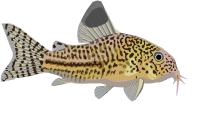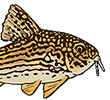protocol for newly arrived WC plecos?
protocol for newly arrived WC plecos?
Hey
So this came up during a convo with a fellow pleco enthusiast.
What do you guys do "protocol" wise with newly arrived WCs? Do you treat it with anything? I have heard of meth blue being used, but any other precautions? tips? etc?
Thanks in advance.
So this came up during a convo with a fellow pleco enthusiast.
What do you guys do "protocol" wise with newly arrived WCs? Do you treat it with anything? I have heard of meth blue being used, but any other precautions? tips? etc?
Thanks in advance.
- MatsP
- Posts: 21038
- Joined: 06 Oct 2004, 13:58
- My articles: 4
- My images: 28
- My cats species list: 117 (i:33, k:0)
- My aquaria list: 10 (i:8)
- My BLogs: 4 (i:0, p:97)
- Spotted: 187
- Location 1: North of Cambridge
- Location 2: England.
Re: protocol for newly arrived WC plecos?
Depends...
If they come straight out of export, I'd treat with some anti-parasite medication (here in the UK I'd say Kusuri "Wormer Plus" is a good candidate).
If they have been through a (good) wholesalers, then you shouldn't need to do anything in particular.
Medication that isn't necessary is definitely a good way to stress the fish, so if they aren't showing symptoms, I'd keep off the medications, but obviously with a close inspection to make sure they aren't showing signs of illness.
One of the hard parts with newly imported fish is to get them to feed properly. They are often quite stressed, and starved, which can lead of "shutdown mode". To solve this, you need to find food they really like. Many fish can't resist live or frozen bloodworm, but it's not a definite fixall.
--
Mats
If they come straight out of export, I'd treat with some anti-parasite medication (here in the UK I'd say Kusuri "Wormer Plus" is a good candidate).
If they have been through a (good) wholesalers, then you shouldn't need to do anything in particular.
Medication that isn't necessary is definitely a good way to stress the fish, so if they aren't showing symptoms, I'd keep off the medications, but obviously with a close inspection to make sure they aren't showing signs of illness.
One of the hard parts with newly imported fish is to get them to feed properly. They are often quite stressed, and starved, which can lead of "shutdown mode". To solve this, you need to find food they really like. Many fish can't resist live or frozen bloodworm, but it's not a definite fixall.
--
Mats
- apistomaster
- Posts: 4735
- Joined: 10 Jun 2006, 14:26
- I've donated: $90.00!
- My articles: 1
- My cats species list: 12 (i:0, k:0)
- My Wishlist: 1
- Location 1: Clarkston, WA, USA
- Location 2: Clarkston, WA, USA
- Interests: Aquaculture and flyfishing
Re: protocol for newly arrived WC plecos?
I begin treating newly imported plecos immediately with praziquantal, flubendazole and metronidazole for 3 weeks. I keep them at 84 to 86*F and provide power head driven sponge filter and a vigorously bubbling air stone to keep the dissolved oxygen levels close to the saturation point for the given temperatures.
Not everyone does this but this is what I do with my new wild plecos and wild Discus. I have never regretted this protocol and my fish have gone on to spawn. I also offer meat eating plecos live Black Worms and frozen Blood worms. Next I begin to introduce them to earth worm sticks which is the staple food for my meat eating plecos. I don't keep any other types.
Not everyone does this but this is what I do with my new wild plecos and wild Discus. I have never regretted this protocol and my fish have gone on to spawn. I also offer meat eating plecos live Black Worms and frozen Blood worms. Next I begin to introduce them to earth worm sticks which is the staple food for my meat eating plecos. I don't keep any other types.
Avid Trout fly fisherman. ·´¯`·...¸><)))º>
Re: protocol for newly arrived WC plecos?
apistomaster: Hi, how did you do it ? full dose of each type one day after another or all at once.
Thanks
Thanks
apistomaster wrote:I begin treating newly imported plecos immediately with praziquantal, flubendazole and metronidazole for 3 weeks. I keep them at 84 to 86*F and provide power head driven sponge filter and a vigorously bubbling air stone to keep the dissolved oxygen levels close to the saturation point for the given temperatures.
Not everyone does this but this is what I do with my new wild plecos and wild Discus. I have never regretted this protocol and my fish have gone on to spawn. I also offer meat eating plecos live Black Worms and frozen Blood worms. Next I begin to introduce them to earth worm sticks which is the staple food for my meat eating plecos. I don't keep any other types.
- apistomaster
- Posts: 4735
- Joined: 10 Jun 2006, 14:26
- I've donated: $90.00!
- My articles: 1
- My cats species list: 12 (i:0, k:0)
- My Wishlist: 1
- Location 1: Clarkston, WA, USA
- Location 2: Clarkston, WA, USA
- Interests: Aquaculture and flyfishing
Re: protocol for newly arrived WC plecos?
I add all three medications at the same time and replace whatever I remove after a water change. Mix the meds in a bottle of water and shake well to dissolve or suspend the meds before adding them to the fish tank.
Many of those keeping Altum Angels use this same technique. Altums have a history of being hard to acclimate because they do not hold up well unless treated carefully from the moment of capture and on. This year exporters took greater care based on much feed back and also very tiny specimens were collected and exported this year. The little ones appeared to travel much better and thus it was the best Altum survival year on record. Late in the season some larger fish were exported and nearly all died.
My point is that these are more delicate than catfish and tolerated the almost standard treatment method I use.
I used it on the 10 H. zebra I bought this year.
Many of those keeping Altum Angels use this same technique. Altums have a history of being hard to acclimate because they do not hold up well unless treated carefully from the moment of capture and on. This year exporters took greater care based on much feed back and also very tiny specimens were collected and exported this year. The little ones appeared to travel much better and thus it was the best Altum survival year on record. Late in the season some larger fish were exported and nearly all died.
My point is that these are more delicate than catfish and tolerated the almost standard treatment method I use.
I used it on the 10 H. zebra I bought this year.
Avid Trout fly fisherman. ·´¯`·...¸><)))º>
Re: protocol for newly arrived WC plecos?
thanks Matt and Larry 
Larry: if you dont mind me asking, what dosage do you use?
Larry: if you dont mind me asking, what dosage do you use?
- MatsP
- Posts: 21038
- Joined: 06 Oct 2004, 13:58
- My articles: 4
- My images: 28
- My cats species list: 117 (i:33, k:0)
- My aquaria list: 10 (i:8)
- My BLogs: 4 (i:0, p:97)
- Spotted: 187
- Location 1: North of Cambridge
- Location 2: England.
Re: protocol for newly arrived WC plecos?
Just to confirm, I think Larry's advice is good - the medications are all anti-parasite medications. Flubendazole [or some close relative] is the active ingredient in Kusuri Wormer Plus. I personally would follow the dosing instructions on the medication you use - none of the something-azole [careful how you say that ... ;) ] are particularly dangerous for fish (or other vertebrates), and it's a commonly used for other pets, such as dogs and cats as anti-worm/flea treatment. I read some research data, and the result was that about 30x overdozing was needed to cause problems with the fish.
--
Mats
--
Mats
- apistomaster
- Posts: 4735
- Joined: 10 Jun 2006, 14:26
- I've donated: $90.00!
- My articles: 1
- My cats species list: 12 (i:0, k:0)
- My Wishlist: 1
- Location 1: Clarkston, WA, USA
- Location 2: Clarkston, WA, USA
- Interests: Aquaculture and flyfishing
Re: protocol for newly arrived WC plecos?
I use the dosage rates listed on the containers. I use Hikari PraziPro-1tsp/20 gals, 10% Flubendazole powder-1/2tsp/20 gals, Fishzole(metronidazole)-1 250mg tablet/10 gals. Dissolve or suspend all these medications in some water prior to adding them to the treatment tank. Flubendazole is not water soluble but somehow it still works in suspension.
I also use malachite green if any Protozoan skin parasites appear like Ich, Velvet or Chilodonella. Chilodonella affects newly imported wild plecos more often than Ich but it looks much like Ich in the early stages of infection. It takes much longer to treat plecos with Chilodonella than it does Ich and I usually use in in combination with about 1 tbs of salt per gal. It can take a couple weeks to cure it and it often has done so much damage that some fish don't survive it. It is best to examine a skin smear under a microscope to know exactly whether your fish have Ich or Chilodonella.
Here is a handy reference to fish diseases and parasites worth book marking.
http://edis.ifas.ufl.edu/pdffiles/FA/FA04100.pdf
Comments about medications.
I do not use potassium permanganate, formalin or copper sulfate preparations recommended in the manual. Malachite Green has worked well for me and is generally safer. For scaleless fish it is best to try half the recommended dose. Contrary to older advice, Catfish are no more sensitive to salt as a adjunct to medication than any other South American tropical fish. Aside from any direct effects on disease organisms, salt seems to promote healing of wounds or raw skin damaged by parasites.
Salt and methylene blue are especially useful for treating wounds and fungal infections.
I also use malachite green if any Protozoan skin parasites appear like Ich, Velvet or Chilodonella. Chilodonella affects newly imported wild plecos more often than Ich but it looks much like Ich in the early stages of infection. It takes much longer to treat plecos with Chilodonella than it does Ich and I usually use in in combination with about 1 tbs of salt per gal. It can take a couple weeks to cure it and it often has done so much damage that some fish don't survive it. It is best to examine a skin smear under a microscope to know exactly whether your fish have Ich or Chilodonella.
Here is a handy reference to fish diseases and parasites worth book marking.
http://edis.ifas.ufl.edu/pdffiles/FA/FA04100.pdf
Comments about medications.
I do not use potassium permanganate, formalin or copper sulfate preparations recommended in the manual. Malachite Green has worked well for me and is generally safer. For scaleless fish it is best to try half the recommended dose. Contrary to older advice, Catfish are no more sensitive to salt as a adjunct to medication than any other South American tropical fish. Aside from any direct effects on disease organisms, salt seems to promote healing of wounds or raw skin damaged by parasites.
Salt and methylene blue are especially useful for treating wounds and fungal infections.
Avid Trout fly fisherman. ·´¯`·...¸><)))º>
Re: protocol for newly arrived WC plecos?
thanks Larry




